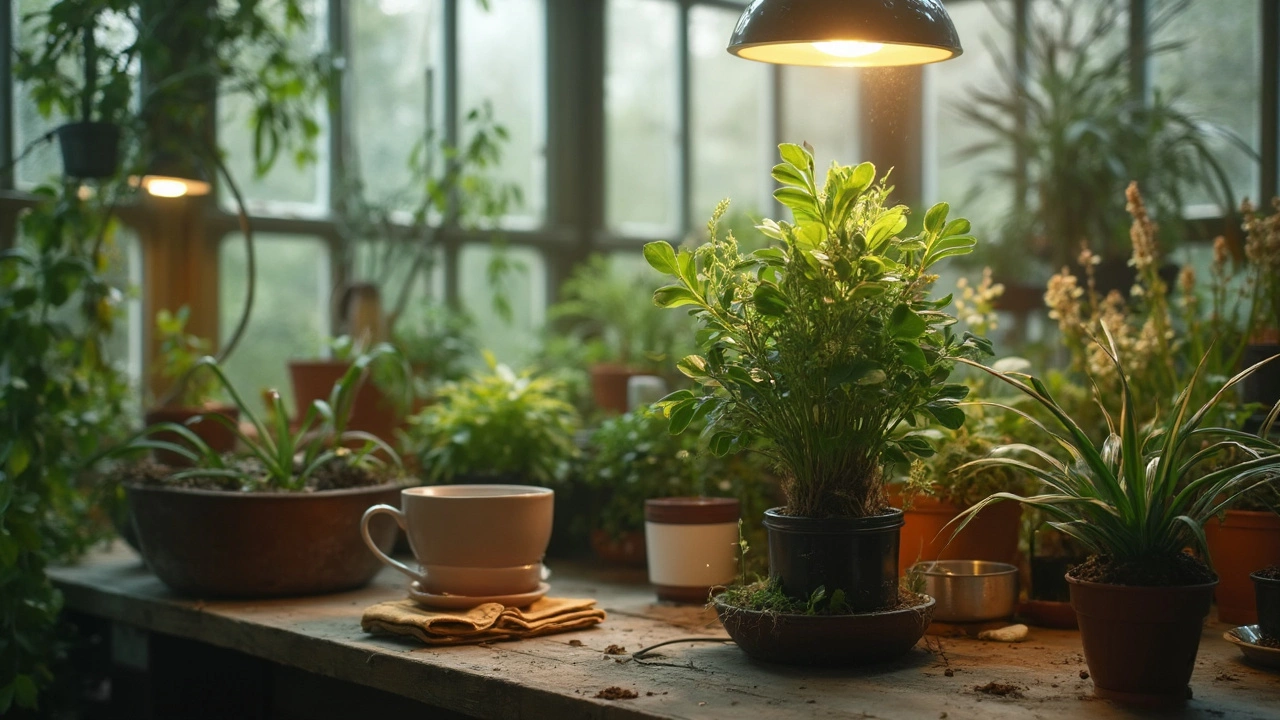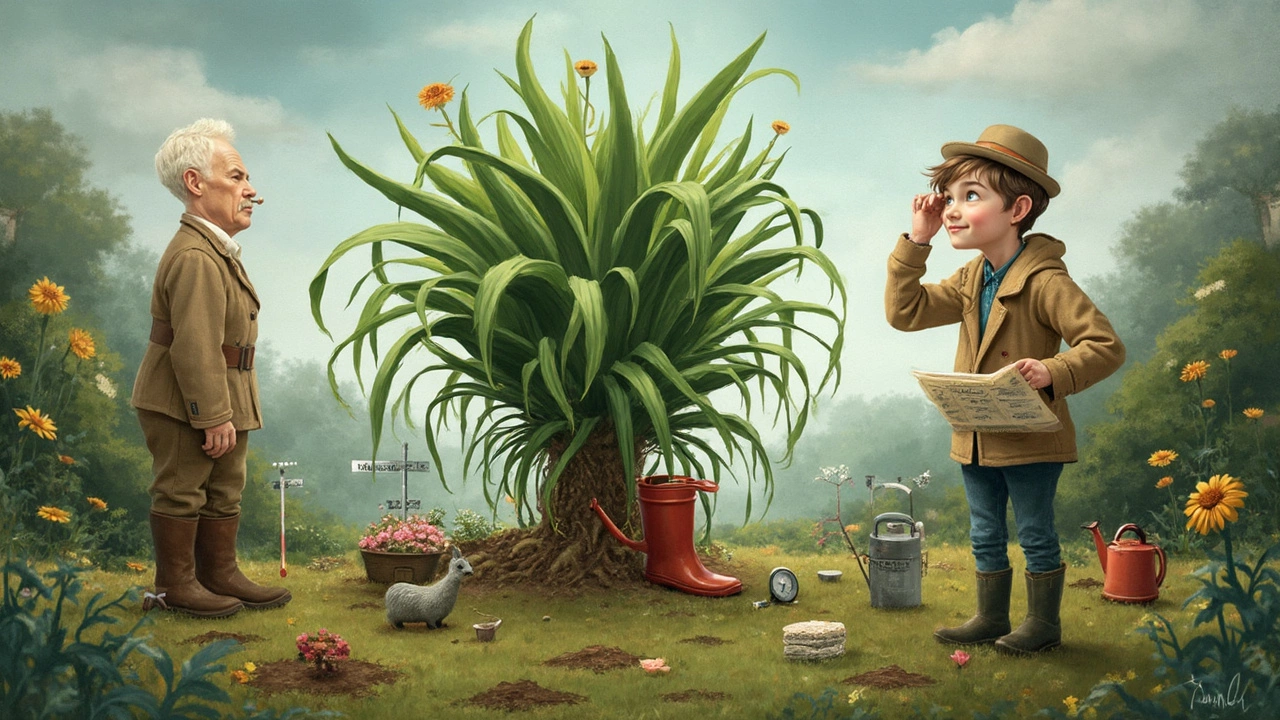Ever tried growing a plant that just refuses to cooperate no matter how much you fuss over it? Some plants seem almost designed to test your patience—and your water bill. While most people picture orchids or roses as high-maintenance, the real showstopper in the neediness department is the maidenhair fern. It wilts if you even think about skipping a mist or letting the soil dry out for a second.
Maidenhair ferns need constant humidity, perfect drainage, and zero temperature swings. Miss a beat and those lacy leaves turn to crispy brown overnight. But why do certain plants push us to the edge like this? It usually comes down to where they evolved and what they're used to getting from their natural habitat. Some plants grew up pampered by waterfalls, shady forests, or rich tropical soils—so your typical windowsill just doesn’t cut it.
- The Top Contenders for Neediest Plant
- Why Some Plants Are So Demanding
- Eco-Friendly Ways to Care for High-Maintenance Plants
- Is It Worth It? Lessons from Growing Fussy Greenery
The Top Contenders for Neediest Plant
If you’re hunting for the most needy plant for your collection, you’re basically diving into gardening’s extreme sports. Not all high-maintenance greenery is created equal, though. Let’s size up the main competitors by what makes them so tough to keep alive—so you know exactly what you’re getting into before your shopping cart gets the better of you.
- Maidenhair Fern (Adiantum): This fern is the undisputed champ when it comes to high-maintenance gardening. It hates dryness, loves humidity, and wants moist (not soggy) soil every single day. The second you forget, those delicate fronds turn into crunchy messes.
- Gardenia: Drop the humidity or mess up the watering once, and you get yellow leaves and zero flowers. Gardenias need consistent moisture, acidic soil, and lots of indirect light. Even slight changes in the environment stress them out.
- Calathea: Known for dramatic curling leaves if the air gets just a bit too dry. Calatheas demand filtered water, high humidity, and steady warmth. If your room even hints at a draft or gets too cold, they’ll sulk for weeks.
- Ficus Lyrata (Fiddle Leaf Fig): Everyone loves the look, but this one's notorious for dropping leaves as soon as it’s moved or if the watering schedule shifts. It wants bright indirect light, precise watering, and hates drafts or dry air.
Here’s a quick rundown comparing their demands:
| Plant | Humidity Needs | Watering | Lighting |
|---|---|---|---|
| Maidenhair Fern | Very high | Frequent, moist soil | Indirect |
| Gardenia | High | Consistent, not soggy | Bright, indirect |
| Calathea | Very high | Regular, filtered water | Low to medium, indirect |
| Fiddle Leaf Fig | Moderate | Careful—not too wet | Bright, indirect |
Each of these high-maintenance plants is basically the diva of the plant world. If you want a challenge or love to fuss constantly, one of these might be for you. Just be ready to tweak your routine like you’re babysitting a newborn—because that’s pretty much what you’re signing up for in the world of sustainable gardening with needy plants.
Why Some Plants Are So Demanding
Ever wonder why some plants are just a ton more work than others? It’s all about where they come from and what they’re used to. Take the maidenhair fern again. In nature, these ferns hang out under thick tree canopies, getting steady drips of water and never dealing with blazing sun or dry air. So when you stick them on your desk, they miss their cloud forest lifestyle. That’s why they go all dramatic if the humidity drops or the soil dries out for half a day.
Plants evolve to handle whatever nature throws at them—some tough it out in deserts, others need the cushiest life possible. High-maintenance needy plant species usually come from super-stable habitats. They expect:
- Steady moisture (not too much, not too little)
- Consistent temperatures
- Filtered light, not direct sun
- Specific soil types
Here’s a quick table showing why some common needy plants are so picky:
| Plant | Native Habitat | Main Requirement |
|---|---|---|
| Maidenhair Fern | Cloud Forests | High humidity |
| Gardenia | Tropical Asia/Africa | Acidic, well-drained soil |
| Orchid | Tropical Rainforest | Filtered light and steady temp |
When you try to grow these high-maintenance gardening favorites at home, you’re almost always fighting against what they actually want. One gardener I talked to put it like this:
“Keeping a maidenhair fern alive indoors takes more effort than raising my toddler. Missing just one watering is the end, and good luck fixing crispy fern leaves later.” — Greg Porter, Portland backyard gardener
If that sounds wild, it’s because it is. These plants simply can’t adjust to quick changes. If you’re aiming for sustainable gardening, you have to decide if you’re willing to engineer their perfect little world or pick something less dramatic.

Eco-Friendly Ways to Care for High-Maintenance Plants
High-maintenance plants can turn even a chill gardener into a sort of plant butler—always running around topping off water, fussing over humidity, or fighting off pests. But you don’t have to blow your water budget or load up on chemicals to keep needy plants healthy. There are simpler and greener ways to make your garden thrive without feeling guilty about your impact.
First, figure out where your plant comes from and what it’s used to. Take the maidenhair fern: it’s from shady, humid forests, not dry, drafty living rooms. Mimic that by grouping your fussy greenery together—plants naturally raise the moisture in the air around each other, slashing your need to mist every hour. You can also set a pebble tray with water under the pot; as the water evaporates, it boosts the humidity right where your plant needs it.
If your plant is a real water guzzler, reuse leftover water from cooking (cooled pasta or veggie rinse water works) instead of always turning on the tap. Steer clear of using water loaded with salt or chemicals, though. Rain barrels can step up your game by giving you a steady supply of chemical-free water, and you’ll save money at the same time.
- Group plants for a humidity boost
- Use pebble trays beneath fussy pots
- Collect and reuse safe household water
- Set up a rain barrel if you’ve got outdoor space
- Use organic, slow-release fertilizer so your plants get what they need without polluting the soil
- Skip peat-based soils; peat harvesting is hard on the planet—coconut coir or compost work great
Pest problems? Skip the harsh sprays. Neem oil and insecticidal soap can take care of most bugs without wrecking your soil or hurting your pets. Sticky traps help keep fungus gnats and other annoyances in check—no chemicals needed.
LED grow lights can help if your home’s dark, and they use way less electricity than old-school bulbs. Pick ones rated for plants so you don’t waste energy on the wrong spectrum.
If you want a quick look at how these sustainable gardening tricks compare to traditional care, here’s a handy snapshot:
| Method | Eco-Friendly? | Impact |
|---|---|---|
| Rain barrel watering | Yes | Saves tap water, avoids chemicals |
| Grouping plants | Yes | Less energy, boosts humidity |
| Chemical fertilizers | No | Can harm soil and water |
| LED grow lights | Yes | Low energy use |
You don’t have to choose between a guilt-free eco garden and enjoying your favorite high-maintenance gardening plants. With some tweaks, you can keep the fussy ones happy and the planet a little happier too.
Is It Worth It? Lessons from Growing Fussy Greenery
If you’ve ever sweated over a needy plant like the maidenhair fern, you know they’re not just a pretty face—they can feel like a part-time job. So, is all this effort worth it? Honestly, it depends on your patience level and your reasons for gardening.
Caring for high-maintenance plants actually teaches you a lot. Beginners might get frustrated, but with every wilted leaf or dried-out stem, you pick up a new clue about what the plant really needs. Growing a plant with a huge rulebook can make you better at noticing the small stuff—like humidity, sunlight changes, or soil texture—which helps you out with the rest of your garden too.
But there’s more to consider. These fussy guys force you to rethink how you use resources. Most sustainable gardening fans don’t want to spend all day running humidifiers or overwatering just to keep one plant alive. Smart gardeners use tricks like grouping humidity-loving plants together, adding pebble trays, or moving their needy plant to naturally damp rooms like the kitchen or bathroom. All these workarounds let you meet the plant’s picky demands without burning extra energy or water.
If you’re wondering what you really “get” out of the deal, here’s the breakdown:
- Bragging rights—tricky plants get tons of attention, and managing to keep one alive feels like a real win.
- Unique greenery—your garden stands out from the cookie-cutter norm.
- More gardening skills—you’ll be able to troubleshoot most plant problems after a stint with a fussy fern.
Still, not everyone has the time or energy for a high-maintenance gardening routine. If you want your garden to look lush and stay eco-friendly, pick your battles. Try one challenge plant and fill in the rest with easy-care options that thrive on neglect.
Here’s a quick snapshot of the trade-offs involved:
| Pros | Cons |
|---|---|
| Boosts your skills | Time-consuming |
| Unique houseplant look | Higher water/humidity needs |
| Conversation starter | Can rack up utility bills |
Tackling a needy plant can be a hassle, but it hands you a deeper connection to what makes plants tick. You might curse the day you brought that maidenhair home, but if you stick with it, you’ll wind up a far better gardener than when you started.
